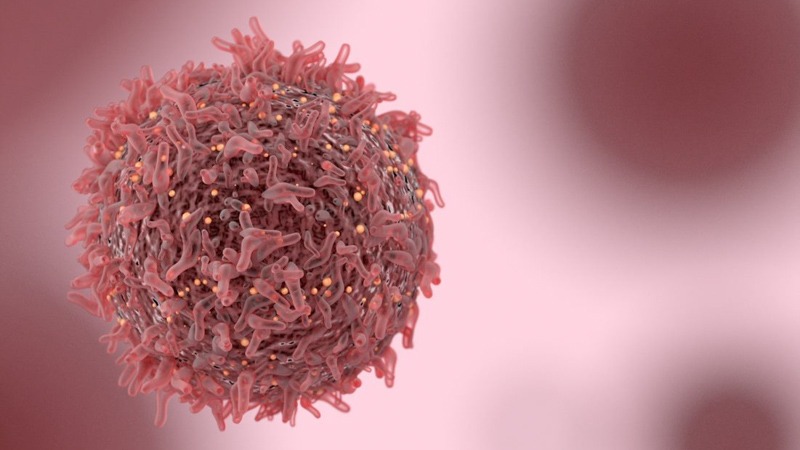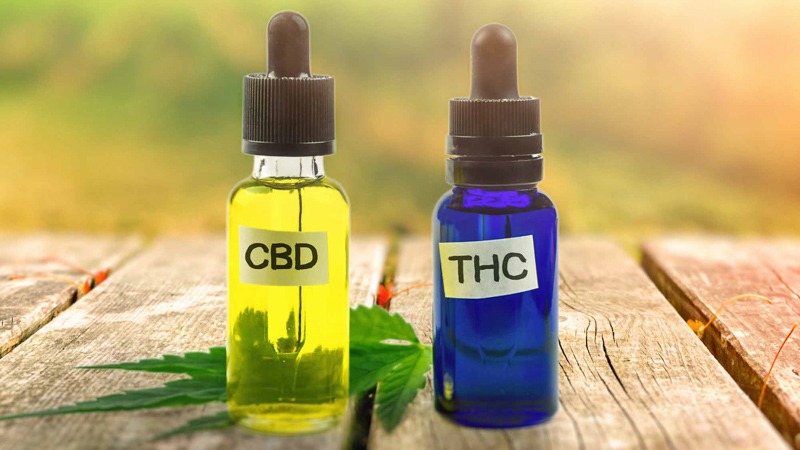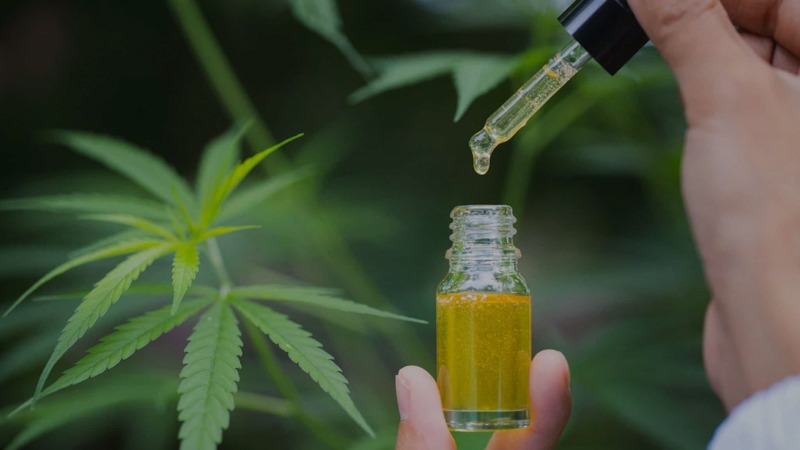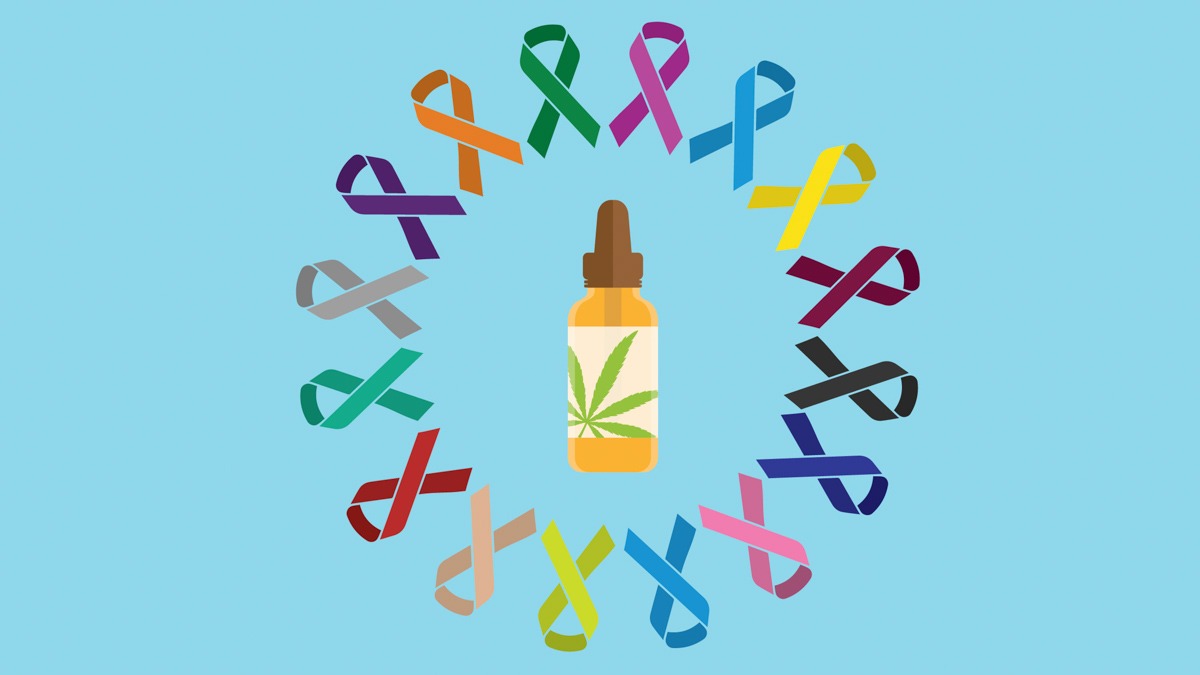CBD’s popularity has grown exponentially over the last few years, with big brands and individual consumers alike making extraordinary claims about its potential health benefits. Claims floating around that CBD can “cure cancer” and “shrink tumors” are far-fetched at best and often outright misleading.
Clinical research is still in its infancy, but evidence supports the idea that cannabinoids may mitigate symptoms resulting from cancer and side effects from cancer treatments such as chemotherapy.
In this article, we’ll separate fact from fiction by presenting the latest research related to CBD oil and cancer and how to shop for high-quality CBD oil products for therapeutic use.
Before we start this article, we advise you to consult with your health care professional before experimenting with CBD for chronic health conditions.
CBD & Cancer Research
1. Does CBD Help With Cancer?
CBD and other cannabinoids derived from the cannabis plant have been primarily used in palliative cancer care to alleviate pain and increase comfort from treatments like chemotherapy [1].
The notable benefits of CBD for cancer are as follows:
- CBD may slow tumor growth [2]
- CBD is a powerful analgesic that may alleviate pain related to cancer and invasive treatments [3]
- CBD has antiemetic effects, which may help to alleviate nausea and vomiting symptoms [4]
- CBD supports a healthy stress response, which may help to relieve anxiety and depression symptoms associated with cancer diagnosis and treatment [5]
While the research on CBD and other cannabinoids application on cancer treatment, prevention, and symptom management show significant potential, more research is needed in this area.
It’s also worth noting that these investigations are conducted in clinical settings with high doses of CBD. The Food and Drug Administration has issued warning letters to CBD manufacturers who claim to treat or prevent diseases.
The recent changes in the societal perception of cannabis and its legalization have increased interest in this topic, which will surely add to the existing research efforts of CBD as a viable treatment for cancer, but what we currently know looks promising.
2. CBD Has Been Shown To Slow Tumor Growth
Although CBD is not guaranteed to destroy cancer tumors quickly and entirely, CBD has been shown in clinical studies to have some efficacy in slowing their growth. As such, it’s possible that it could be used to play an integral part in the treatment of various types of cancerous tumors.
In 2019, a review on in vitro and in vivo studies that focused on pancreatic cancer showed that CBD, as well as other cannabinoids, helped to slow the growth of tumors, induced tumor cell death, and reduced tumor invasion. However, the authors of the review specifically noted that while the studies’ results were promising, research into the effectiveness of dosing, different formulas, and routes of administration are lacking and urgently needed [2].
Moreover, there’s strong evidence supporting the claim that CBD (and other cannabinoids) can reduce tumor growth in animal models of cancer. More clinical trials are needed on humans, but the evidence so far looks promising [6].
3. CBD’s Effect on Cancerous Cells
 Cancer is often associated with tumor growth, which is caused by cancerous cells that proliferate uncontrollably to invade nearby tissues and spread (metastasize) throughout the body.
Cancer is often associated with tumor growth, which is caused by cancerous cells that proliferate uncontrollably to invade nearby tissues and spread (metastasize) throughout the body.
Consequently, a number of trials and studies have focused on CBD’s effects on these types of cancer cells.
In 2014, a study investigating experimental in vivo models (with an entire living organism) of colon cancer showed that CBD inhibits colorectal cancer cell proliferation via CB1 and CB2 receptor activation [7].
The authors concluded these results may have some clinical relevance for the use of CBD and cannabis-based medicines in cancer patients.
In the same year, a review of 35 in vitro and in vivo studies found that CBD, as well as other cannabinoids, could be beneficial in the treatment of gliomas (brain tumors) by slowing the speed of growth [4-5, 8].
A 2019 study highlighted CBD for its potential to induce cancer cell death and make glioblastoma cells more sensitive to radiation — all without having any effect on healthy cells in the body. This is a huge step forward in cancer treatment, specifically alongside radiation therapy [6].
4. Treating Breast Cancer Specifically
In 2010, research demonstrated how CBD can be effective in treating preclinical models of metastatic breast cancer. It was shown to significantly reduce breast cancer cell proliferation and invasion [14].
5. CBD as a Complementary Treatment for Cancer
Cancer treatments such as chemotherapy and radiation therapy often produce a plethora of negative side effects. These range from nausea, vomiting, and lack of appetite to severe stress, anxiety, and depression. Additionally, the disease itself, as well as the treatment, can often be incredibly painful.
With its analgesic, anti-anxiety, and anti-inflammatory properties, CBD may be able to provide an effective complementary treatment for cancer alongside conventional treatment methods.
CBD as a Painkiller
Research has shown CBD has profound analgesic properties, meaning that it may be effective in reducing the pain caused by cancer or its treatment [10].
It’s been suggested to relieve pain through interaction and modulation of the endocannabinoid, immune, and nociceptive systems.
CBD For Stress & Anxiety
Studies show that CBD can relieve the symptoms of stress and anxiety in multiple ways.
These include reducing inflammation (which could be an underlying cause of metabolic or poor gut health), encouraging the production of serotonin (a natural mood enhancer), reducing muscle tension, and improving sleep hygiene.
CBD For Chemotherapy-Induced Vomiting
Preclinical research indicates that CBD, as well as other cannabinoids, suppresses nausea and vomiting through activation of somatodendritic autoreceptors located in the DRN, reducing the release of the forebrain 5-HT [4]. Consequently, it may be effective for treating both nausea and vomiting produced by chemotherapy or other cancer treatments.
CBD for Cancer Prevention
CBD has been shown to lower blood pressure and have anti-inflammatory properties, both of which can help to lower several key risk factors for developing cancer. However, when it comes to using CBD for cancer prevention, results are still inconclusive. This is mainly because research is limited in this area.
Although studies on CBD specifically are few and far between, the National Cancer Institute has reviewed multiple studies on the link between cannabis and cancer. For example, one study in 2015 found that cannabis users had a 45% lower risk of developing bladder cancer [12]. Another — which focused on 64,855 men in the US — showed that cannabis consumption did not increase the risk of tobacco-related cancers [13].
However, the same study also found a link between cannabis consumption and an increased risk of prostate cancer. Plus, cannabis smoke still produces carcinogens – although this is, of course, mitigated when consuming CBD orally, sublingually, or vaping it.
CBD vs. THC for Cancer: Which is Better?
 Currently, there is only one CBD-based medicine that has been approved by the US Food and Drug Administration (FDA). The only use of Epidiolex is in the treatment of two rare types of epilepsy.
Currently, there is only one CBD-based medicine that has been approved by the US Food and Drug Administration (FDA). The only use of Epidiolex is in the treatment of two rare types of epilepsy.
Conversely, two THC-based drugs have been approved for use — and both can treat nausea and vomiting caused by cancer treatment. Dronabinol comes in either the form of a tincture (Syndros) or capsules (Marinol), while Nabilone (Cesamet) is a synthetic cannabinoid similar to THC that is taken orally.
Another drug, Nabiximols, is not yet available in the US, but it’s been successfully rolled out in Canada and some parts of Europe. This oral spray containing both CBD and THC has brought encouraging results in treating pain in cancer patients.
Lastly, THC has been shown to increase appetite, whereas studies found CBD may suppress it [9]. Relative to this, THC would usually be of more benefit than CBD, as a loss of appetite and subsequent weight loss is a common side-effect of cancer and its treatment.
How To Use CBD To Support Your Health?
There are multiple ways of consuming CBD — and they all have different pros and cons.
1. Oral Absorption
CBD oil can be swallowed orally (either directly as oil or in capsule form). It can also be infused into a number of foods, such as gummies, butter, or cookies (anything fat- or alcohol-based, as CBD, dissolves in these compounds).
The CBD travels through the digestive system before entering the bloodstream, so it takes longer to feel the effects compared with consuming it sublingually or vaping. Sometimes, it can take up to a couple of hours for them to kick in. However, the effects are longer-lasting — up to six hours.
2. Sublingual Absorption (Under Your Tongue)
CBD oil can be dropped under the tongue and absorbed by the capillaries located there. It goes directly into the bloodstream, bypassing the digestive system. This means the effects can be felt quickly — making it an ideal consumption method for sudden bursts of pain or anxiety.
3. Inhalation (Vaping)
Much like sublingual consumption, vaping allows the CBD to be absorbed into the bloodstream immediately through the capillaries in the cheeks and the lungs. This makes it another great option to relieve the symptoms targeted by CBD.
4. Topical Absorption
CBD oil can be either applied directly onto the skin or infused into creams, lotions, balms, salves. Often, the formula contains other soothing ingredients for greater effect. The CBD reacts with the CB receptors located in the skin, providing quick, targeted, localized pain relief as and when needed.
Since CBD topicals have zero bioavailability — none of it enters the bloodstream, the CBD is absorbed through the skin’s endocannabinoid system — it is better suited for localized problems, such as pain flare-ups in cancer patients or inflamed muscles and joints.
Some cancer patients combine CBD topicals with other formats for better results when it comes to pain relief and skin problems related to chemotherapy and radiation.
Where To Buy High-Quality CBD?
It’s best to buy CBD online. That way, you can easily compare different brands, strengths, and flavors, all while researching as necessary at your leisure in the comfort of your own home.
However, you need to ensure that you’re buying a top-quality product from a reputable company.
If the extract contains high levels of toxins, heavy metals, and/or pesticides, it could have negative side effects like poisoning. It’s therefore imperative that you buy CBD products from a manufacturer you can trust.
Companies should have a relevant Certificate of Analysis (CoA) for every product. This shows that the CBD extract has undergone independent third-party lab testing.
Third-party laboratories are in no way associated or affiliated with the brands or companies that they’re testing, so they have no reason to be dishonest about their findings. Plus, these labs are held in high regard, with exceptional and consistent reputations to uphold.
The test results shown on the CoA show the potency, purity, and overall quality and contents of the CBD product.
Is CBD Safe for Cancer Patients?
The general consensus among experts, including the World Health Organization, is that even in extremely large doses, CBD is safe and well-tolerated by humans.
Even so, the efficacy and safety of CBD consumption by cancer patients are still to be proven in large-scale controlled clinical trials. Positive personal stories are anecdotal evidence only and should not be relied upon or taken as concrete proof of benefits.
It is also extremely important to note that some studies have shown that CBD could interfere with the metabolism of certain cancer drugs in the liver. This might make cancer treatments less effective or even possibly more toxic. More research is needed in this area. But if you have cancer, it’s imperative that you consult with your oncologist if you’re thinking about adding CBD to your regime.
How To Dose CBD?
 No two cancer patients will have exactly the same experiences. The type of cancer and its severity often differs — and so do the side effects of the treatment. As such, the required dose of CBD to provide an effective complementary treatment will also vary.
No two cancer patients will have exactly the same experiences. The type of cancer and its severity often differs — and so do the side effects of the treatment. As such, the required dose of CBD to provide an effective complementary treatment will also vary.
The best idea is to start low and go slow. This means starting with a low dose and gradually increasing it until you experience the desired effects. Then, you can stick with that optimum dosage unless symptoms increase or worsen.
As mentioned, it’s impossible to overdose on CBD, so there’s no need to worry about doing any serious harm. Even so, you still want to avoid experiencing any unwanted (albeit mild) side-effects, such as nausea, dry mouth, or drowsiness.
Final Thoughts: Should You Take CBD for Cancer?
The evidence we currently have suggests that CBD may be beneficial for people with cancer, both in terms of treating the disease itself as well as managing the side effects of conventional treatment. Unfortunately, however — as is the case with most CBD-related topics — much more research is needed in this area.
What we do know is that CBD may be able to slow the growth of tumors and reduce cancer cell proliferation and invasion, which is incredibly promising. And with its analgesic, anti-inflammatory, and anti-anxiety properties, it could potentially be an effective complementary treatment to chemotherapy, radiation therapy, etc.
Usually, oral or sublingual consumption, or a combination of both, is the best option. Vaping is also a common alternative. but it’s worth remembering that vaping may not always be possible in some environments (such as hospitals).
Above all, always consult a medical professional before taking any new supplement to treat a particular condition.
References Cited In This Article
- Davis, M. P. (2016). Cannabinoids for symptom management and cancer therapy: the evidence. Journal of the National Comprehensive Cancer Network, 14(7), 915-922.
- Sharafi, G., He, H., & Nikfarjam, M. (2019). Potential use of cannabinoids for the treatment of pancreatic cancer. Journal of pancreatic cancer, 5(1), 1-7.
- Nichols, J. M., & Kaplan, B. L. (2020). Immune responses regulated by cannabidiol. Cannabis and cannabinoid research, 5(1), 12-31.
- Parker, L. A., Rock, E. M., & Limebeer, C. L. (2011). Regulation of nausea and vomiting by cannabinoids. British journal of pharmacology, 163(7), 1411-1422.
- Spinella, T. C., Stewart, S. H., Naugler, J., Yakovenko, I., & Barrett, S. P. (2021). Evaluating cannabidiol (CBD) expectancy effects on acute stress and anxiety in healthy adults: a randomized crossover study. Psychopharmacology, 1-13.
- Velasco, G., Hernández-Tiedra, S., Dávila, D., & Lorente, M. (2016). The use of cannabinoids as anticancer agents. Progress in neuro-psychopharmacology and biological psychiatry, 64, 259-266.
- Romano, B., Borrelli, F., Pagano, E., Cascio, M. G., Pertwee, R. G., & Izzo, A. A. (2014). Inhibition of colon carcinogenesis by a standardized Cannabis sativa extract with high content of cannabidiol. Phytomedicine, 21(5), 631-639.
- Rocha, F. C. M., dos Santos Júnior, J. G., Stefano, S. C., & da Silveira, D. X. (2014). A systematic review of the literature on clinical and experimental trials on the antitumor effects of cannabinoids in gliomas. Journal of neuro-oncology, 116(1), 11-24.
- Kirkham, T. C. (2009). Cannabinoids and appetite: food craving and food pleasure. International Review of Psychiatry, 21(2), 163-171.
- Russo E. B. (2008). Cannabinoids in the management of difficult-to-treat pain. Therapeutics and clinical risk management, 4(1), 245–259.
- De Gregorio, D., McLaughlin, R. J., Posa, L., Ochoa-Sanchez, R., Enns, J., Lopez-Canul, M., Aboud, M., Maione, S., Comai, S., & Gobbi, G. (2019). Cannabidiol modulates serotonergic transmission and reverses both allodynia and anxiety-like behavior in a model of neuropathic pain. Pain, 160(1), 136–150.
- Faisal, F. A., Sundi, D., Cooper, J. L., Humphreys, E. B., Partin, A. W., Han, M., … & Schaeffer, E. M. (2014). Racial disparities in oncologic outcomes after radical prostatectomy: long-term follow-up. Urology, 84(6), 1434-1441.
- Sidney, S., Quesenberry, C. P., Friedman, G. D., & Tekawa, I. S. (1997). Marijuana use and cancer incidence (California, United States). Cancer Causes & Control, 8(5), 722-728.
- McAllister, S. D., Murase, R., Christian, R. T., Lau, D., Zielinski, A. J., Allison, J., … & Desprez, P. Y. (2011). Pathways mediating the effects of cannabidiol on the reduction of breast cancer cell proliferation, invasion, and metastasis. Breast cancer research and treatment, 129(1), 37-47.

